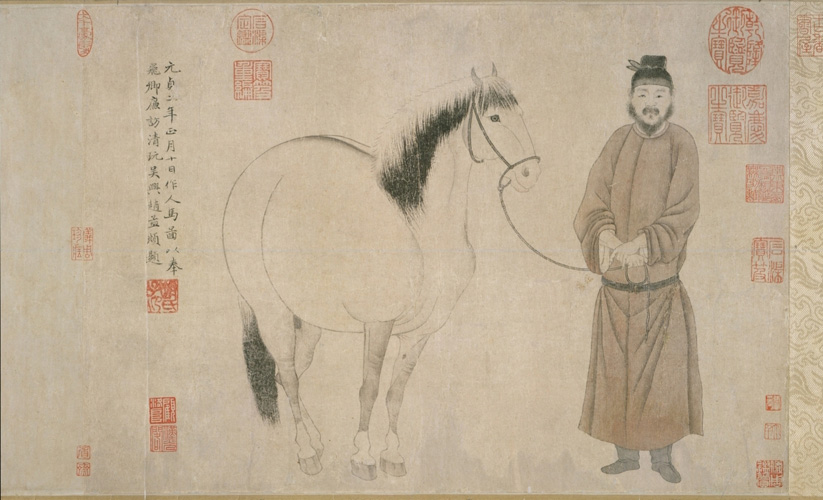Home >> Art >> Painting >> Masters >> Zhao Mengfu >> Man and Horse
Man and Horse (人馬圖)
Zhao Mengfu (趙孟頫, 1254-1322), Yuan Dynasty (1271-1368)
Ink and colors on paper, The Metropolitan Museum of Art, New York
In the early Yuan period, when the ruling Mongols curtailed the employment of Chinese scholar-officials, the theme of the groom and horse - one associated with the legendary figure of Bole (伯樂), whose ability to judge horses had become a metaphor for the recruitment of able government officials - became a symbolic plea for the proper use of scholarly talent. Zhao Mengfu painted this work for the high-ranking Surveillance Commissioner Feiqing, who may have been a government recruiter. Executed in early 1296, shortly after Zhao's temporary withdrawal from civil service, the sensitively rendered groom may be a self-portrait.
The striking geometry of the composition, made up of a series of prominent arcs in the figures of the horse and groom, and framed by the level ground line and vertical inscription, appears to have been constructed with a compass and square. The Chinese term "compass-square" (guiju, 規矩) means "regulation" or "order." Thus, the painting may also be read as a metaphor for good government and, by extension, a measure of the artist's moral rectitude.
